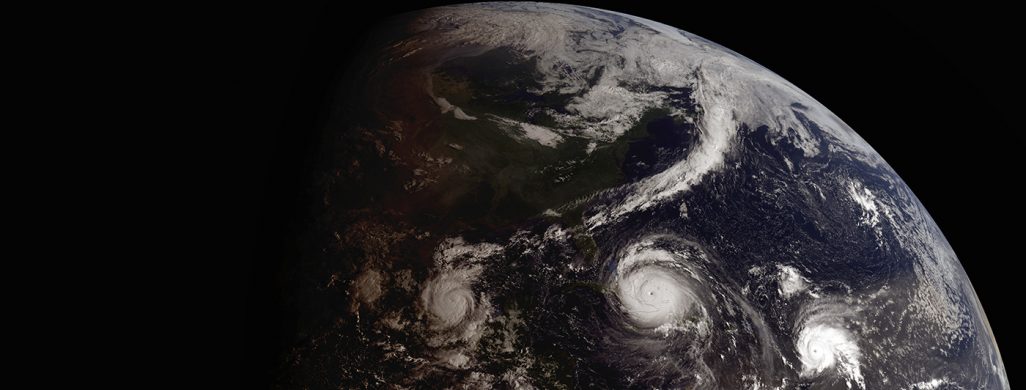Hurricane intensification
In almost every region of the world where hurricanes form, their maximum sustained winds are getting stronger. That is according to a new study by scientists at the National Oceanic and Atmospheric Administration National Center for Environmental Information and University of Wisconsin-Madison Cooperative Institute for Meteorological Satellite Studies, who analyzed nearly 40 years of hurricane satellite imagery.
A warming planet may be fueling the increase.
“Through modeling and our understanding of atmospheric physics, the study agrees with what we would expect to see in a warming climate like ours,” says James Kossin, a NOAA scientist based at UW–Madison and lead author of the paper, which is published today (May 18, 2020) in the Proceedings of the National Academy of Sciences.

The research builds on Kossin’s previous work, published in 2013, which identified trends in hurricane intensification across a 28-year data set. However, says Kossin, that timespan was less conclusive and required more hurricane case studies to demonstrate statistically significant results.
To increase confidence in the results, the researchers extended the study to include global hurricane data from 1979-2017. Using analytical techniques, including the CIMSS Advanced Dvorak Technique that relies on infrared temperature measurements from geostationary satellites to estimate hurricane intensity, Kossin and his colleagues were able to create a more uniform data set with which to identify trends.
“The main hurdle we have for finding trends is that the data are collected using the best technology at the time,” says Kossin. “Every year the data are a bit different than last year, each new satellite has new tools and captures data in different ways, so in the end we have a patchwork quilt of all the satellite data that have been woven together.”
Kossin’s previous research has shown other changes in hurricane behavior over the decades, such as where they travel and how fast they move. In 2014, he identified poleward migrations of hurricanes, where tropical cyclones are travelling farther north and south, exposing previously less-affected coastal populations to greater risk.

In 2018, he demonstrated that hurricanes are moving more slowly across land due to changes in Earth’s climate. This has resulted in greater flood risks as storms hover over cities and other areas, often for extended periods of time.
“Our results show that these storms have become stronger on global and regional levels, which is consistent with expectations of how hurricanes respond to a warming world,” says Kossin. “It’s a good step forward and increases our confidence that global warming has made hurricanes stronger, but our results don’t tell us precisely how much of the trends are caused by human activities and how much may be just natural variability.”
This work was supported by NOAA Oceanic and Atmospheric Research Climate Program Office.
Reference: Global increase in major tropical cyclone exceedance probability over the past four decades. James P. Kossin, Kenneth R. Knapp, Timothy L. Olander, Christopher S. Velden. Proceedings of the National Academy of Sciences May 2020, 201920849; DOI: 10.1073/pnas.1920849117
